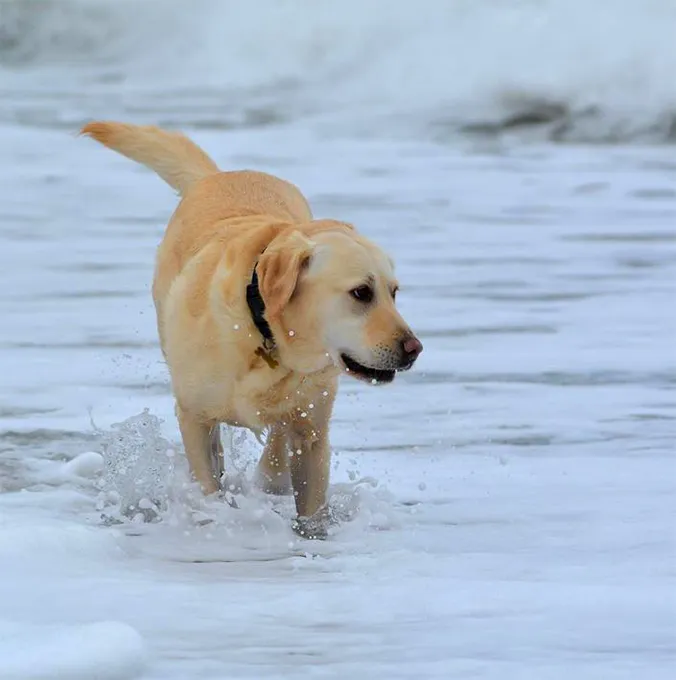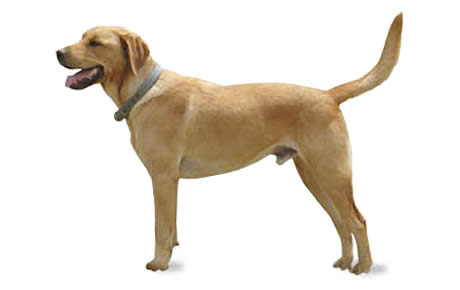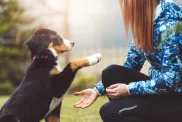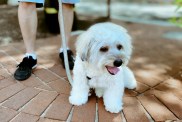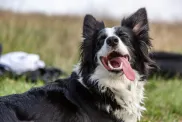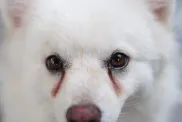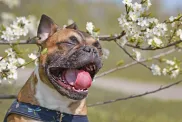Loving, devoted, and energetic, Goldador mixed breed dogs are prized for their good-natured trainability. As a cross between the Golden Retriever and Labrador Retriever, this mix inherited some of the best traits from both purebred parents.
Although these dogs sometimes have the unfortunate status of “designer breed,” you may find them in the care of shelters and rescue groups. Remember to adopt! Don’t shop if you want to bring a dog home.
Goldadors make great family members — they’re naturals with kids and social with other pets — as well as valuable guide, service, and bomb detection dogs. Affectionate and friendly, they can even make great companions for novice pet parents. However, they are highly energetic dogs and need plenty of exercise. Make sure you can commit to lots of daily walks and active play sessions before you bring this mix home. If you can, you’ll have a happy, loving, and loyal member of the family.
See below for complete list of mixed dog breed traits and facts about Goldadors!
Goldador Mixed Dog Breed Pictures
Adaptability
-
Adapts Well To Apartment Living
Looking for the best dog for your apartment? Contrary to popular belief, the suitability of dogs who adapt well to apartment living goes beyond its size. Apartment dwellers have a myriad of dog breeds to choose from as potential companions, with various factors to consider. Some large breeds can adapt well to apartment living and have lower activity levels. Others may require more space and possess higher energy levels. On the other hand, certain small dog breeds with abundant energy can still find contentment with indoor playtime or brisk walks.
However, when selecting a dog that adapts well apartments, it is essential to prioritize your neighbors. Opting for a pet that doesn’t excessively bark and behaves politely when encountering others in shared spaces like is crucial for maintaining a harmonious apartment environment.
In high-rise settings, it’s worth noting that numerous small dogs may exhibit a propensity for high energy and frequent barking. This makes them less suitable for apartment living. Therefore, desirable qualities in an apartment dog encompass being quiet, low-energy, and displaying polite behavior towards other residents.
Factors To Consider When Choosing A Dog For An Apartment
When considering dogs that adapt well to apartments, size alone should not be the sole determinant. Apartment dwellers have a wealth of dog breeds to choose from as potential furry companions. It’s important to remember that the size of your living space is just one factor to consider. While some larger breeds can adapt well to apartment living, with lower, others may require more space and have higher energy levels, making them less suitable for smaller apartments. Conversely, certain small dog breeds with higher energy levels can still thrive in apartments, finding contentment through indoor playtime or brisk walks. However, it is crucial to consider your neighbors’ comfort when selecting a dog. Opt for a pet that doesn’t bark excessively and behaves politely when interacting with others in shared spaces.
Therefore, it’s important to prioritize qualities such as being quiet, low-energy, calm indoors, and exhibiting good manners when living in close proximity to other residents. By considering these factors, you can find a dog that will adapt well to apartment living and create a harmonious living environment for everyone involved.
-
Good For Novice Owners
Some dogs are simply easier than others; they take to training better and are fairly easygoing. They’re also resilient enough to bounce back from your mistakes or inconsistencies.
Dogs who are highly sensitive, independent thinking, or assertive may be harder for a first-time dog parent to manage. You’ll get your best match if you take your dog-owning experience into account as you choose your new pooch.
If you’re new to dog parenting, take a look at 101 Dog Tricks and read up on how to train your dog!
-
Sensitivity Level
Some dogs will let a stern reprimand roll off their backs, while others take even a dirty look to heart. Low-sensitivity dogs, also called “easygoing,” “tolerant,” “resilient,” and even “thick-skinned,” can better handle a noisy, chaotic household, a louder or more assertive owner, and an inconsistent or variable routine. Do you have young kids, throw lots of dinner parties, play in a garage band, or lead a hectic life? Go with a low-sensitivity dog.
-
Tolerates Being Alone
Some breeds bond very closely with their family and are more prone to worry or even panic when left alone by their owner. An anxious dog can be very destructive–barking, whining, chewing, and otherwise causing mayhem. These breeds do best when a family member is home during the day or if you can take the dog to work.
-
Tolerates Cold Weather
Breeds with very short coats and little or no undercoat or body fat, such as Greyhounds, are vulnerable to the cold. Dogs with a low cold tolerance need to live inside in cool climates and should have a jacket or sweater for chilly walks. You can find a great jacket for your dog here!
-
Tolerates Hot Weather
Dogs with thick, double coats are more vulnerable to overheating. So are breeds with short noses, like Bulldogs or Pugs, since they can’t pant as well to cool themselves off. If you want a heat-sensitive breed, your dog will need to stay indoors with you on warm or humid days, and you’ll need to be extra cautious about exercising your dog in the heat.
All-around friendliness
-
Affectionate With Family
When it comes to unconditional love and unwavering loyalty, few animals can rival the affectionate nature of dogs. These remarkable creatures have earned their reputation as man’s best friend, and many breeds are particularly renowned for their love and devotion to their families. With their warm hearts and wagging tails, affectionate family dogs enrich the lives of their owners in countless ways.
One such breed known for its affectionate demeanor is the Golden Retriever. With their gentle temperament and friendly disposition, Golden Retrievers form deep bonds with their families. They eagerly participate in family activities, whether it’s a game of fetch in the yard or cuddling on the couch during a movie night. Their expressive eyes and ever-wagging tails are a testament to the joy they feel in the presence of their loved ones.
Another family-favorite breed is the Labrador Retriever. Renowned for their playful and patient nature, Labradors are excellent companions for children and adults alike. They readily engage in playtime with the kids, showcasing their boundless energy and enthusiasm. But when the day winds down, they seamlessly transition into loving and gentle cuddle buddies, comforting their family members with their warm presence.
Beyond specific breeds, mixed-breed dogs also have a special place in the hearts of families seeking affectionate companions. The shelter dogs, in particular, form deep connections with their adoptive families. They seem to understand the second chance they’ve been given and repay it with endless love and gratitude.
How To Know If A Dog Is Good With Families
The affectionate nature of family dogs extends beyond play and cuddles. Dogs have a remarkable ability to sense their owner’s emotions, offering comfort and support during difficult times. Whether it’s a wagging tail after a long day at work or a sympathetic nuzzle during moments of sadness, they prove time and again that they are attuned to their family’s needs.
It is important to note that not all dogs of the same breed will be equally affectionate. Some dogs may be more independent or aloof, while others may be more clingy or demanding of attention. The best way to find out how affectionate a dog is is to meet them in person and interact with them.
-
Kid-Friendly
Being gentle with children, sturdy enough to handle the heavy-handed pets and hugs they can dish out, and having a blasé attitude toward running, screaming children are all traits that make a kid-friendly dog. You may be surprised by who’s on that list: Fierce-looking Boxers are considered good with children, as are American Staffordshire Terriers (which are considered Pit Bulls). Small, delicate, and potentially snappy dogs such as Chihuahuas aren’t always so family-friendly.
**All dogs are individuals. Our ratings are generalizations, and they’re not a guarantee of how any breed or individual dog will behave. Dogs from any breed can be good with children based on their past experiences, training on how to get along with kids, and personality. No matter what the breed or breed type, all dogs have strong jaws, sharp pointy teeth, and may bite in stressful circumstances. Young children and dogs of any breed should always be supervised by an adult and never left alone together, period.
-
Dog Friendly
Friendliness toward dogs and friendliness toward humans are two completely different things. Some dogs may attack or try to dominate other dogs, even if they’re love-bugs with people; others would rather play than fight; and some will turn tail and run. Breed isn’t the only factor. Dogs who lived with their littermates and mother until at least six to eight weeks of age and who spent lots of time playing with other dogs during puppyhood, are more likely to have good canine social skills.
-
Friendly Toward Strangers
Stranger-friendly dogs will greet guests with wagging tails and nuzzles; others are shy, indifferent, or even aggressive. However, no matter what the breed, a dog who was socialized and exposed to lots of different types, ages, sizes, and shapes of people as a puppy will respond better to strangers as an adult. Remember that even friendly dogs should stay on a good, strong leash like this one in public!
Health And Grooming Needs
-
Amount Of Shedding
If you’re going to share your home with a dog, you’ll need to deal with some level of dog hair on your clothes and in your house. However, shedding does vary greatly among the breeds. Some dogs shed year-round, some “blow” seasonally, some do both, and some shed hardly at all. If you’re a neatnik, you’ll need to either pick a low-shedding breed or relax your standards. To help keep your home a little cleaner, you can find a great de-shedding tool here!
-
Drooling Potential
Drool-prone dogs may drape ropes of slobber on your arm and leave big, wet spots on your clothes when they come over to say hello. If you’ve got a laid-back attitude toward slobber, fine; but if you’re a neatnik, you may want to choose a dog who rates low in the drool department.
-
Easy To Groom
Some breeds are brush-and-go dogs; others require regular bathing, clipping, and other grooming just to stay clean and healthy. Consider whether you have the time and patience for a dog who needs a lot of grooming, or the money to pay someone else to do it.
-
General Health
Due to poor breeding practices, some breeds are prone to certain genetic health problems, such as hip dysplasia. This doesn’t mean that every dog of that breed will develop those diseases; it just means that they’re at an increased risk.
If you’re adopting a puppy, it’s a good idea to find out which genetic illnesses are common to the breed you’re interested in. You may also want to ask if your shelter or rescue has information about the physical health of your potential pup’s parents and other relatives.
-
Potential For Weight Gain
Some breeds have hearty appetites and tend to put on weight easily. As in humans, being overweight can cause health problems in dogs. If you pick a breed that’s prone to packing on pounds, you’ll need to limit treats, make sure they get enough exercise, and measure out their daily food servings into regular meals rather than leaving food out all the time.
Ask your vet about your dog’s diet and what they recommend for feeding your pooch to keep them at a healthy weight. Weight gain can lead to other health issues or worsen problems like arthritis.
-
Size
Get ready to meet the giants of the doggy world! Large dog breeds aren’t just big balls of fluff, they’re like loving, oversized teddy bears on a mission to steal your heart. Need some convincing? Let’s dive into the awesome benefits of owning one!
First things first, these pooches are a living security system! With their impressive size and thunderous barks, they’ll have any would-be intruder running for the hills. Talk about peace of mind! Plus, who needs an alarm when you’ve got a furry giant protecting your castle?
But that’s not all. Large dog breeds are all about loyalty and devotion. They’ll stick by your side through thick and thin, becoming your most dedicated bestie. Their love knows no bounds! When you have a giant fluffball showing you unconditional love, you’ll feel like the luckiest human on the planet.
Now, let’s talk about their talents. These big fellas are the ultimate working partners. With brains and brawn, they’re up for any challenge. From search and rescue missions to lending a helping paw to those in need, these dogs are superheroes in fur coats. They’ll make you proud every step of the way!
Don’t let their size fool you—these gentle giants have hearts as big as their paws. They’re incredible with kids and other pets, spreading their love like confetti. Their patience and kindness make them perfect family pets, ensuring harmony in your household.
Oh, and get ready to break a sweat! These dogs are fitness enthusiasts, and they’ll keep you on your toes. Daily walks, jogs, and play sessions will not only keep them happy and healthy but will also give you a reason to ditch the couch and join in on the fun. It’s a win-win situation!
So, if you’re ready for a dose of big love, go ahead and consider a large dog breed. They’re the best wing-dog you could ever ask for, ready to make your life a thousand times more exciting, loving, and downright awesome! Get ready for the big adventure of a lifetime!
Trainability
-
Easy To Train
Easy-to-train dogs are more adept at forming an association between a prompt (such as the word “sit”), an action (sitting), and a consequence (getting a treat) very quickly. Other dogs need more time, patience, and repetition during training.
Many breeds are intelligent but approach training with a “What’s in it for me?” attitude, in which case you’ll need to use rewards and games to teach them to want to comply with your requests.
Related:
10 Fun, Impressive Tricks You Can Teach Any Dog
-
Intelligence
Dogs who were bred for jobs that require decision making, intelligence, and concentration, such as herding livestock, need to exercise their brains, just as dogs who were bred to run all day need to exercise their bodies. If they don’t get the mental stimulation they need, they’ll make their own work–usually with projects you won’t like, such as digging and chewing. Obedience training and interactive dog toys are good ways to give a dog a brain workout, as are dog sports and careers, such as agility and search and rescue.
-
Potential For Mouthiness
Common in most breeds during puppyhood and in Retriever breeds at all ages, mouthiness means a tendency to nip, chew, and play-bite (a soft, fairly painless bite that doesn’t puncture the skin). Mouthy dogs are more likely to use their mouths to hold or “herd” their human family members, and they need training to learn that it’s fine to gnaw on chew toys, but not on people. Mouthy breeds tend to really enjoy a game of fetch, as well as a good chew on a toy that’s been stuffed with kibble and treats.
-
Prey Drive
Dogs with a high prey drive have an instinctive desire to stalk, capture, and prey upon potential food sources. Dogs who were bred to hunt, such as Terriers, have an inborn desire to chase — and sometimes kill — other animals. Anything whizzing by — such as cats, squirrels, and perhaps even cars — can trigger that instinct.
How to address a high prey drive
Off-leash adventures are too great a temptation for pups who will wander and hunt. Dogs who like to chase need to be leashed. And, even on a leash, you may experience your dog pulling on the leash to reach rodents or birds in their sight. Otherwise, these pups should be kept in a fenced area when outdoors. If your pup has a high prey drive, you’ll need a high, secure fence in your yard.
These breeds generally aren’t a good fit for homes with smaller pets that can look like prey, such as cats, hamsters, or small dogs. Breeds that were originally used for bird hunting, on the other hand, generally won’t chase, but you’ll probably have a hard time getting their attention when there are birds flying by.
Other behavioral concerns
Observing your dog’s prey drive, which is instinctual and biologically-rooted, is not the same as observing aggression. Much aggression is born of fear and anxiety, especially in the case of dog aggression toward humans.
The tendency to wander, even into oncoming traffic, can produce diasterious results for pups with predatory instincts. It can also lead to pups being bitten by snakes or attacked by other wild animals they may pursue while on the hunt.
-
Tendency To Bark Or Howl
Some breeds sound off more often than others. When choosing a breed, think about how often the dog vocalizes. Learn more about breeds with a tendency to bark or howl.
If you’re considering a hound, would you find their trademark howls musical or maddening? If you’re considering a watchdog, will a city full of suspicious “strangers” put your pup on permanent alert? Will the local wildlife literally drive your dog wild? Do you live in housing with noise restrictions? Do you have neighbors nearby? Then you may wish to choose a quieter dog.
-
Wanderlust Potential
Some breeds are more free-spirited than others. Nordic dogs such as Siberian Huskies were bred to range long distances, and given the chance, they’ll take off after anything that catches their interest. And many hounds simply must follow their noses–or that bunny that just ran across the path–even if it means leaving you behind.
Exercise needs
-
Energy Level
High-energy dogs are always ready and waiting for action. Originally bred to perform a canine job of some sort, such as retrieving game for hunters or herding livestock, they have the stamina to put in a full workday. They need a significant amount of exercise and mental stimulation, and they’re more likely to spend time jumping, playing, and investigating any new sights and smells.
Low-energy dogs are the canine equivalent of a couch potato, content to doze the day away. When picking a breed, consider your own activity level and lifestyle, and think about whether you’ll find a frisky, energetic dog invigorating or annoying.
-
Intensity
A vigorous dog may or may not have high energy, but everything they do, they do with vigor: they strain on the leash (until you train them not to), try to plow through obstacles, and even eats and drinks with great big gulps. These dynamos need lots of training to learn good manners, and may not be the best fit for a home with young kids or someone who’s elderly or frail. A low-vigor dog, on the other hand, has a more subdued approach to life.
-
Exercise Needs
Some breeds do fine with a slow evening stroll around the block. Others need daily, vigorous exercise, especially those that were originally bred for physically demanding jobs, like herding or hunting.
Without enough exercise, these breeds may put on weight and vent their pent-up energy in ways you don’t like, such as barking, chewing, and digging. Breeds that need a lot of exercise are good for outdoorsy, active people, or those interested in training their dog to compete in a high-energy dog sport, such as agility.
-
Potential For Playfulness
Some dogs are perpetual puppies — always begging for a game — while others are more serious and sedate. Although a playful pup sounds endearing, consider how many games of fetch or tag you want to play each day, and whether you have kids or other dogs who can stand in as playmates for the dog.
Goldador Overview
The idea was to create a working dog with the sensitivity of the Golden Retriever and the tolerance of the Labrador Retriever. It worked. Cross them, and the result is the unequivocally genial Goldador. Thanks to their easygoing nature and keen intelligence, Goldadors have proven outstanding guide dogs, service dogs, search and rescue dogs, therapy dogs, and bomb detection dogs. But like their parent breeds, Goldadors are happiest simply working alongside a person they love.
Goldadors are active and require at least half an hour of daily exercise — most enjoy retrieving games as well as hiking and swimming. Once they’ve reached physical maturity (between 18 and 24 months), Goldadors make excellent jogging companions.
Training the eager-to-please Goldador is relatively easy – they come from a long line of dogs who work closely and willingly with people. This makes them an excellent choice for first-time owners, provided they get the exercise, structure, and positive reinforcement they crave. Goldadors are also a good option for families with children (though they can be a bit rambunctious for toddlers), as they want nothing more than to be part of family activities.
The ideal residence for a Goldador is a home with a fenced yard, but with regular exercise and companionship they can live and thrive in apartments and condos. Whatever his home, a Goldador should live indoors with his people.
Goldador Highlights
- Goldadors like to eat and can easily become overweight if they don’t get enough exercise.
- Goldadors are good family dogs and generally do well with children of all ages.
- The Goldador sheds moderately and requires weekly brushing.
- Goldadors usually get along well with other dogs and pets, especially when they’re raised with them or socialized to them at an early age.
- Goldadors require about 30 minutes of exercise per day. They enjoy being outdoors and can make excellent jogging companions.
- Although a house with a fenced yard is the ideal home for a Goldador, he can do well in an apartment or condo with proper exercise.
- Goldadors can be a good choice for first-time dog owners.
- To get a healthy dog, never buy a puppy from a puppy mill, a pet store, or a breeder who doesn’t provide health clearances or guarantees. Look for a reputable breeder who tests her breeding dogs to make sure they’re free of genetic diseases that they might pass onto the puppies and who breeds for sound temperaments.
Goldador History
The Goldador was first developed more than a decade ago: the Labrador Retriever and the Golden Retriever were crossed with the hopes of creating a sensitive, tolerant working dog. The effort proved successful. Organizations that train guide and assistance dogs often use these Lab/Golden crosses.
As a companion, the Goldador has not yet gained the popularity of some other so-called “designer” dogs, such as Labradoodles. At this time, there are no breed clubs or any efforts to create a breed standard for the Goldador.
Goldador Size
The Goldador is one of the few designer breeds with a fairly predictable size, as both parent breeds are large and similar in size and shape. The Goldador is usually 22 to 24 inches tall at the shoulder and weighs 60 to 80 pounds.
Goldador Personality
The Goldador is affectionate and loyal, alert enough to make an excellent watchdog, but too friendly to be an effective guard dog. He loves children and gets along with other animals, especially when he’s been raised with them.
His intelligence and desire to please render him highly trainable, and he responds best to positive reinforcement techniques. He’s capable of working and thinking independently – and does so beautifully as an assistance dog – but he prefers to have guidance and structure in his life. This is a people-loving dog who won’t be happy left to himself in the backyard.
Like every dog, Goldadors need early socialization: exposure to many different people, sights, sounds, and experiences when they’re young. Socialization helps ensure that your Goldador puppy grows up to be a well-rounded dog.
Goldador Health
Goldadors are prone to certain health conditions. Not all Goldadors will get any or all of these diseases, but it’s important to be aware of them if you’re considering this mix.
- Hip Dysplasia is a heritable condition in which the thighbone doesn’t fit snugly into the hip joint. Some dogs show pain and lameness on one or both rear legs, but you may not notice any signs of discomfort in a dog with hip dysplasia. As the dog ages, arthritis can develop. X-ray screening for hip dysplasia is done by the Orthopedic Foundation for Animals or the University of Pennsylvania Hip Improvement Program (PennHIP). Hip dysplasia is hereditary, but it can be worsened by environmental factors, such as rapid growth from a high-calorie diet or injuries incurred from jumping or falling on slick floors.
- Elbow Dysplasia is a heritable condition common to large-breed dogs. It’s thought to be caused by different growth rates of the three bones that make up the dog’s elbow, causing joint laxity. This can lead to painful lameness. Your vet may recommend surgery to correct the problem, or medication and weight loss to control the pain.
- Cataracts are an opacity on the lens of the eye that causes difficulty in seeing. The eye(s) of the dog will have a cloudy appearance. Cataracts usually occur in old age and sometimes can be surgically removed to improve the dog’s vision.
- Diabetes mellitus is a disorder in which the body cannot regulate blood sugar levels. Blood sugar levels are regulated in part by insulin, which is produced in the pancreas. Glucose (sugar) is needed by the cells of the body to burn for energy; insulin is the key that lets the glucose into the cell. Without insulin, the glucose cannot enter the cell, so the cells are hungry even though there are high levels of glucose circulating in the blood. A diabetic dog will eat more food to try to compensate, but he will lose weight because food is not being used efficiently. Signs of diabetes are excessive urination and thirst, increased appetite, and weight loss. Diabetes can be controlled by diet and daily insulin injections.
- Progressive Retinal Atrophy (PRA): This is a degenerative eye disorder that eventually causes blindness from the loss of photoreceptors at the back of the eye. PRA is detectable years before the dog shows any signs of blindness. Fortunately, dogs can use their other senses to compensate for blindness, and a blind dog can live a full and happy life. Just don’t make it a habit to move the furniture around. Reputable breeders have their dogs’ eyes certified annually by a veterinary ophthalmologist and do not breed dogs with this disease.
Before purchasing a Goldador, it’s important to research the health concerns that occur with both the Labrador Retriever and the Golden Retriever. Both parents should have health clearances from the Orthopedic Foundation for Animals for hips, elbows, heart, and thyroid and from the Canine Eye Registry Foundation (CERF) certifying that the eyes are normal.
Goldador Care
The ideal home for a Goldador is a house with a fenced yard where he can play safely; however, he can do well in an apartment or condo if he gets daily walks or runs. Either way, exercise is very important for a Goldador’s health and happiness — at least 30 minutes per day is ideal. Interested in dog sports? Goldadors make formidable competitors in agility and flyball.
Mental stimulation is crucial as well. Teach your Goldador to fetch the paper or your slippers, practice obedience training regularly with him, and put his mind to work from time to time with an interactive dog toy.
As with all dogs, positive reinforcement techniques (praise, play, and food rewards) work best with the Goldador. He’s sensitive, and harsh corrections will damage his confidence.
Goldador Feeding
Recommended daily amount: 3.5 to 4.25 cups of a high-quality dog food daily, divided into two meals.
Note: How much your adult dog eats depends on his size, age, build, metabolism, and activity level. Dogs are individuals, just like people, and they don’t all need the same amount of food. It almost goes without saying that a highly active dog will need more than a couch potato dog. The quality of dog food you buy also makes a difference-the better the dog food, the further it will go toward nourishing your dog and the less of it you’ll need to shake into your dog’s bowl.
For more on feeding your Goldador, see our guidelines for buying the right food, feeding your puppy, and feeding your adult dog.
Goldador Coat Color And Grooming
A Goldador should have the same double coat as a Labrador Retriever, with a short, thick, straight topcoat and a soft, dense undercoat (some have a slight wave down the back). Generally, a Goldador’s coat color ranges from yellow to gold to reddish gold, but because the Goldador is a crossbreed, he may inherit the black coat of a Lab parent.
Weekly brushing with a rubber curry brush will remove dead hair, helping to keep it off your clothes and furniture. During seasonal shedding periods, however, daily brushing is recommended. Bathe your Goldador as needed, and be sure to give him a thorough freshwater rinse any time he goes swimming.
The Goldador can be prone to ear infections, so check and clean the ears weekly. Other grooming needs include dental hygiene and nail care. Brush your Goldador’s teeth at least two or three times a week to remove tartar buildup and the accompanying bacteria. Trim his nails once or twice a month, as needed. If you can hear the nail clicking on the floor, they’re too long. Short nails keep the feet in good condition and won’t scratch your legs when your Goldador jumps up to greet you.
Begin accustoming your Goldador to being brushed and examined when he’s a puppy. Handle his paws frequently – dogs are touchy about their feet – and look inside his mouth and ears. Make grooming a positive experience filled with praise and rewards, and you’ll lay the groundwork for easy veterinary exams and other handling when he’s an adult.
Goldador Children And Other Pets
Goldadors are an ideal family companion and are generally gentle and loving toward children of all ages. As puppies, they can be a bit rambunctious and may knock over smaller children unintentionally, so close supervision is important. Social and easy-going, Goldadors do well with other dogs and pets, especially when raised together.
Always teach children how to approach and touch dogs, and always supervise any interactions between dogs and young children to prevent any biting or ear or tail pulling on the part of either party. Teach your child never to approach any dog while he’s sleeping or eating or to try to take the dog’s food away. No dog, no matter how good-natured, should ever be left unsupervised with a child.
Goldador Rescue Groups
There are no official rescue groups for the Goldador, but this cross is frequently available at private and municipal animal shelters. If you’re interested in adopting an adult Goldador who’s already gone through the destructive puppy stage and may already be trained, your local animal shelter is a good place to start.
Goldador Dog Breed Pictures
-
Goldador Dog Breed Picture
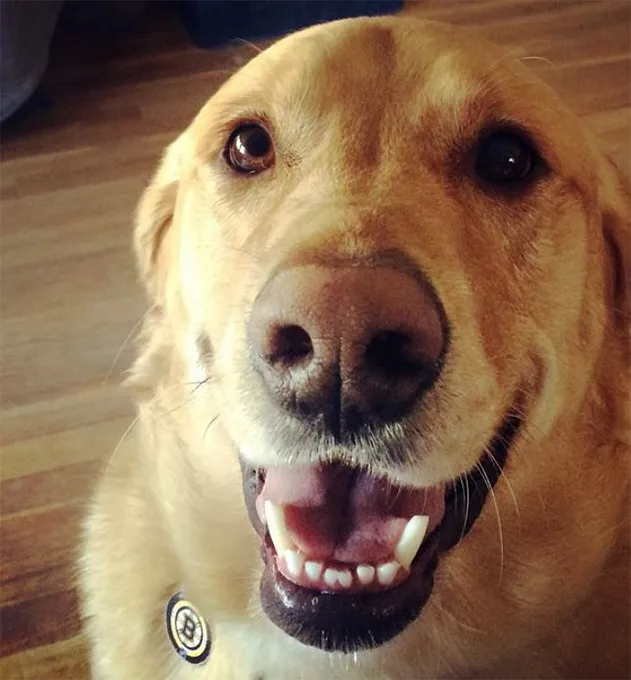
-
Goldador Dog Breed Picture
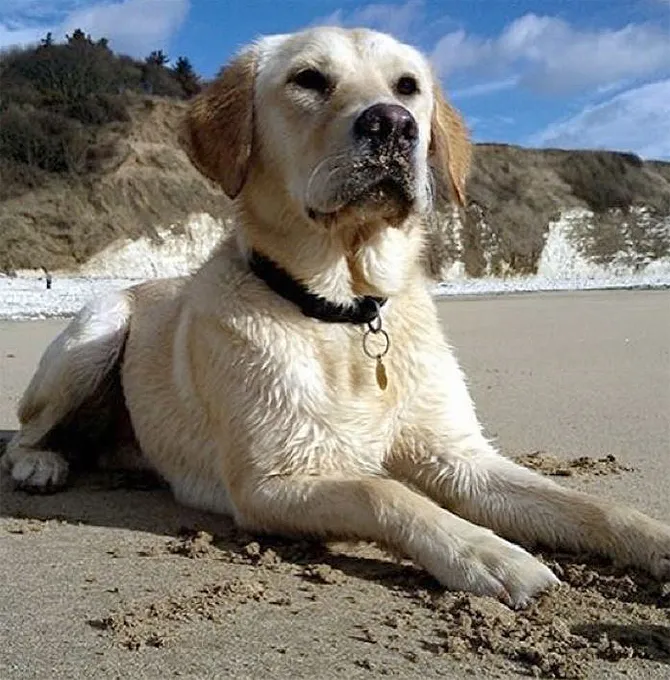
-
Goldador Dog Breed Picture
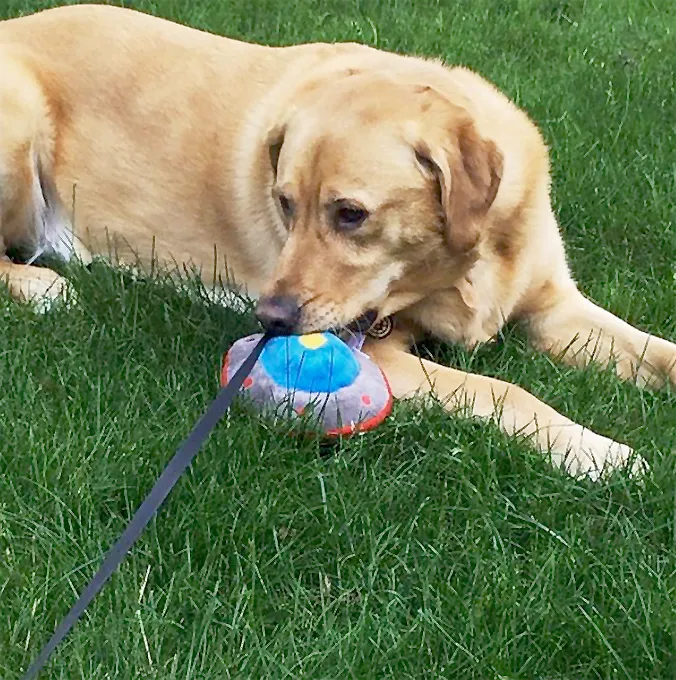
-
Goldador Dog Breed Picture
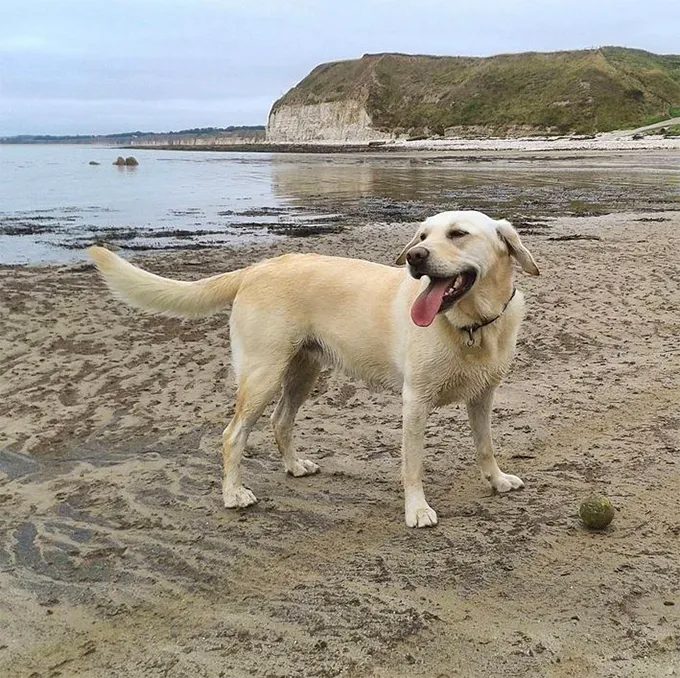
-
Goldador Dog Breed Picture
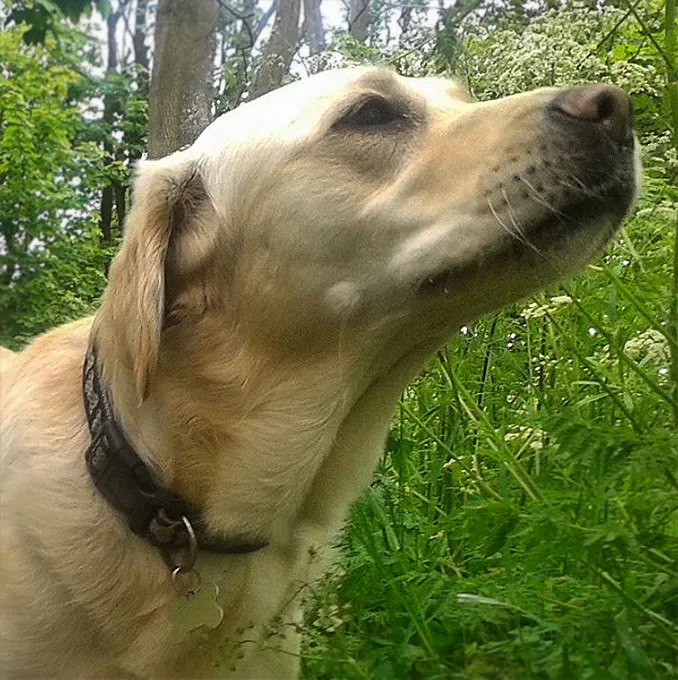
-
Goldador Dog Breed Picture
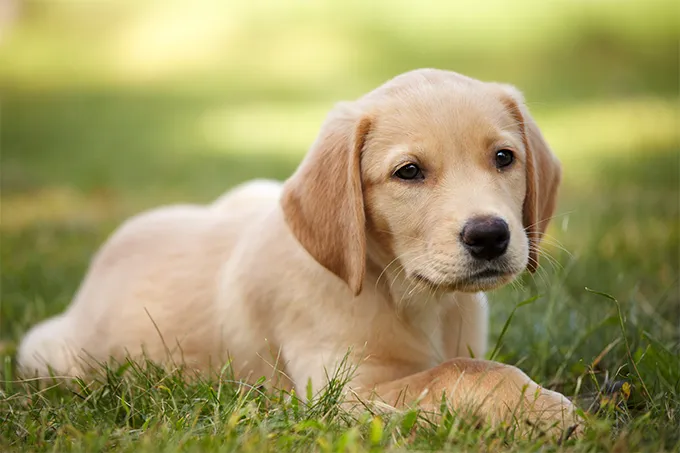
-
Goldador Dog Breed Picture
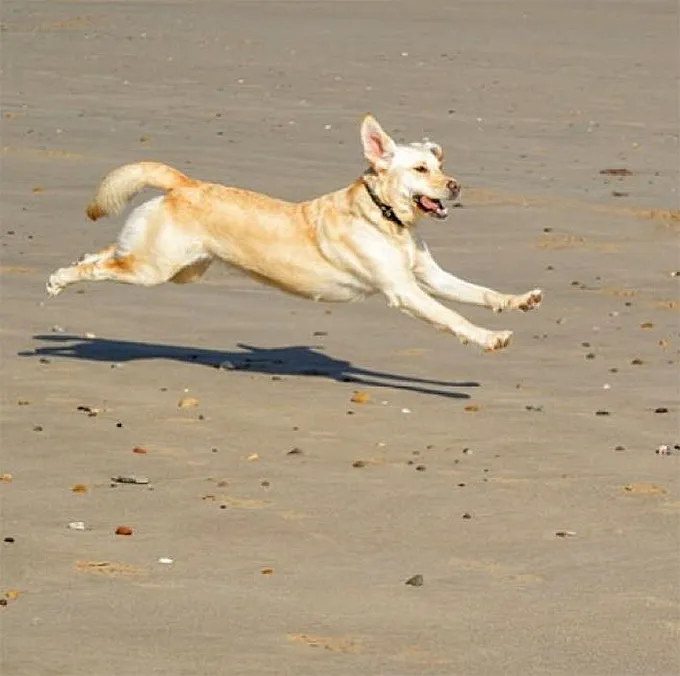
-
Goldador Dog Breed Picture
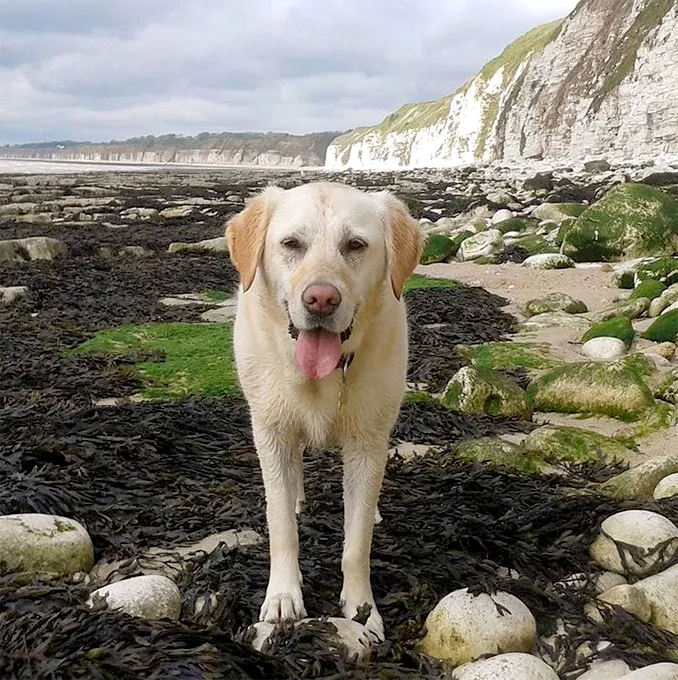
-
Goldador Dog Breed Picture
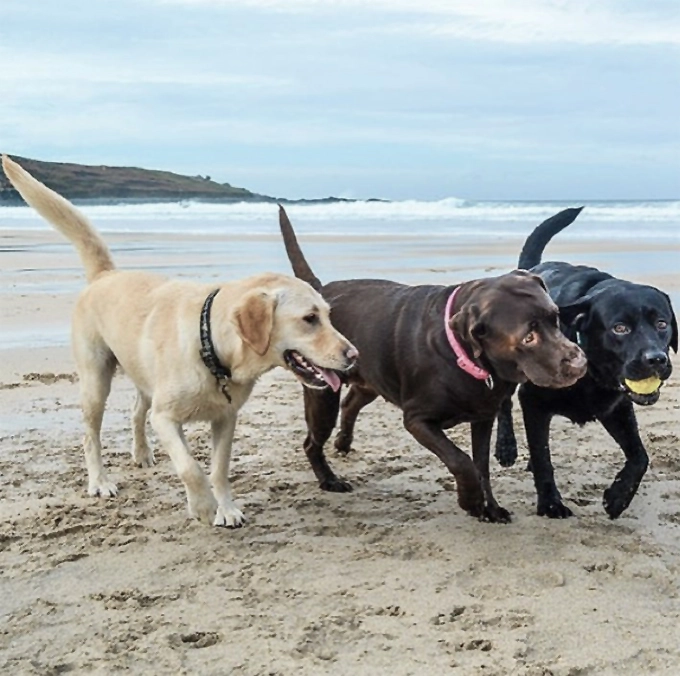
-
Goldador Dog Breed Picture
